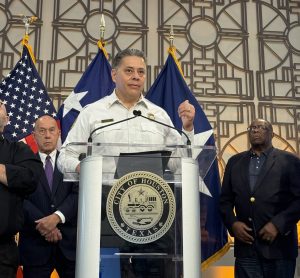
In October, job openings experienced a significant decline to their lowest point in 2½ years, signaling a potential loosening of the historically tight labor market, according to the latest report from the Labor Department on Tuesday.
The data revealed a seasonally adjusted total of 8.73 million job openings for the month, indicating a notable decrease of 617,000 or 6.6%. This figure fell well below the Dow Jones estimate of 9.4 million and marked the lowest level since March 2021.
The drop in vacancies resulted in a ratio of openings to available workers at 1.3 to 1, a substantial shift from just a few months ago when it hovered around 2 to 1. This ratio is now nearly in line with the pre-pandemic level of 1.2 to 1.
The Job Openings and Labor Turnover Survey (JOLTS), closely monitored by Federal Reserve policymakers for signs of labor slack, indicates a potential change in the labor market dynamics. The Fed, having raised interest rates significantly since March 2022 to address labor market tightness and inflation concerns, is now considering its next policy moves.
Despite the substantial decline in job openings, the total number of hires only experienced a slight decrease, while layoffs and separations saw modest increases. The quits rate, often viewed as a gauge of worker confidence in finding alternative employment easily, remained relatively stable. After peaking at around 3% of total employment during the Great Resignation in late 2021 and early 2022, the quits rate has since decreased to 2.3%.
“This data certainly solidifies the Fed’s decision to keep rates unchanged while looking for signs of a pivot in the upcoming meeting next week,” said Tuan Nguyen, U.S. economist at RSM. “Besides inflation, job opening data, serving as a proxy for labor demand and wage pressure, has been the Fed’s top priority in recent times.”
Job opening declines were observed across various industries, with notable decreases in education and health services (-238,000), financial activities (-217,000), leisure and hospitality (-136,000), and retail (-102,000).
The JOLTS report precedes the Labor Department’s nonfarm payrolls count for November, with economists anticipating an increase of 190,000, up from October’s 150,000.
Federal Reserve officials, particularly concerned about the robust jobs market contributing to inflation, may find the decline in job openings as positive news, suggesting a potential alignment of labor demand with supply.
The upcoming two-day policy meeting of the Federal Open Market Committee is anticipated to result in unchanged interest rates, with market expectations of rate cuts beginning in March as the central bank navigates inflation progress and potential economic headwinds. Additionally, economic news on Tuesday included the ISM services index for November, registering at 52.7%, indicating expansion and beating Dow Jones forecasts. The positive reading was attributed to gains in inventory sentiment, inventories, and new export orders, while employment inched higher and prices edged lower.










